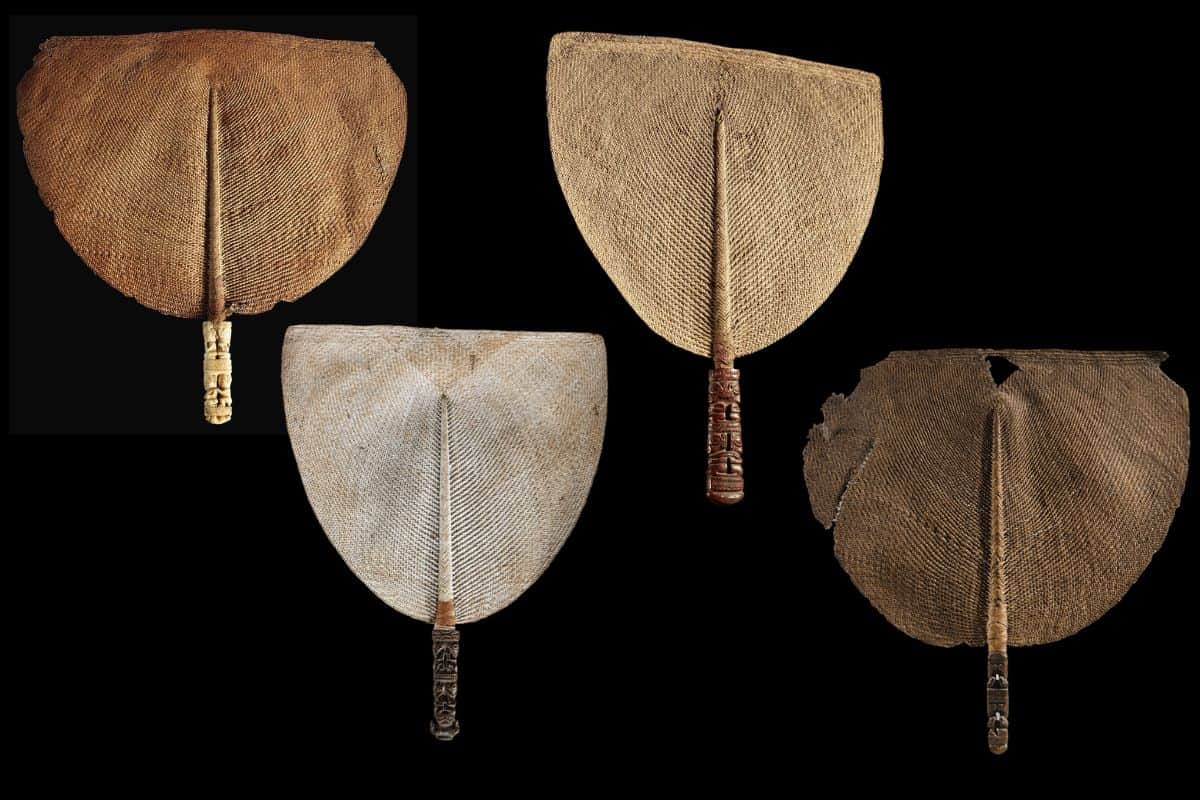Marquesas Art and Artifacts
Old Marquesas Art and Artifacts are valuable and highly collectable. This is especially true with anything that has a classic Tiki face. The art of this area is rare and like other Polynesian art has very dedicated collectors.
The Marquesas Islands are probably best known for their stilt steps and U’u clubs.
This brief collectors guide can not cover all the artefacts to be found and does not attempt to cover body art or other non-carved artforms.
I buy and sell Marquesas art and Artifacts either outright or on a commission basis. Just send me a photo of your Marquesas Art of Artifact and I will give you an idea of what I think it is worth.
I hope you enjoy the article and please feel free to share.

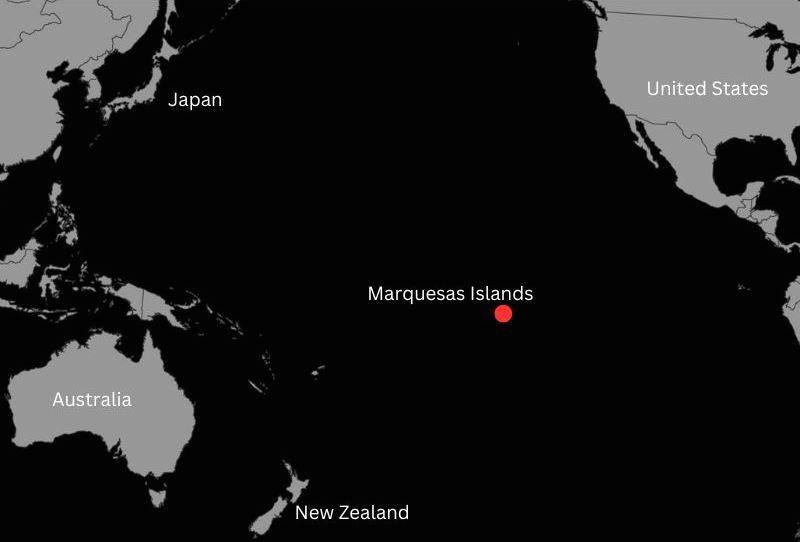

Background of Marquesas Islands art and Artifacts
The he Marquesas islands are a part of French Polynesia about 1500 kilometers North East of Tahiti and in the middle of the Pacific Ocean. The Marqesas consist of 12 major volcanic islands spread across 1050 square kilometers.
The people are Polynesian and arrived by sailing canoes around 200-300 AD probably from Tonga and Samoa. Their society is hierarchial and led by chiefs known as Ariki and artisan priests.
First contact with the European world was when spanish explorer Alvaro de Menana de Neira sighted the islands in 1595. James Cook visited the Islands on his second voyage in 1774.
European explorers in the 18th and 19th century had significant impacts on Marquesan society as did the diseases they bought with them. Smallpox in particular devasted the local population and destabalized the social structure.
The london mission society and Catholic church arrived in the early 19th Century and reshaped traditional religeous beliefs and practices significantly.
In the 19th century the french took an interest in the Marquesas and claimed the islands as part of french polynesia. The French introduced a governmental structure and new technologies.

Marquesas Art and Artifact Types
Marquesas Sculpture

Marquesan Tiki
Tiki god sculptures were made of either basalt or softer tufa. These tiki range from 15 cm to over 2 metres tall. They are the best stone sculptures made in the pacific and remarkable works of neolithic art.
These sculptures were made into the 19th Century with later examples having more naturalistic features and longer torsos.
Older basalt sculptures with surrealistic faces are the most collectable.
Marquesan Figures
Most Marquesan figures are architectural elements such as ridge poles on ceremonial houses. Old examples made for tribal use are extremely rare. The very best early figures have a pole ofn the bottom so they could be inserted into the ground of the sacred temple marae.
The marquesans did however continue carving wood figures to sell. these early tiki pieces are still collectable but have no where near the value of a tribally used example.


Marquesan Canoe prows
Length 28cm – 51cm
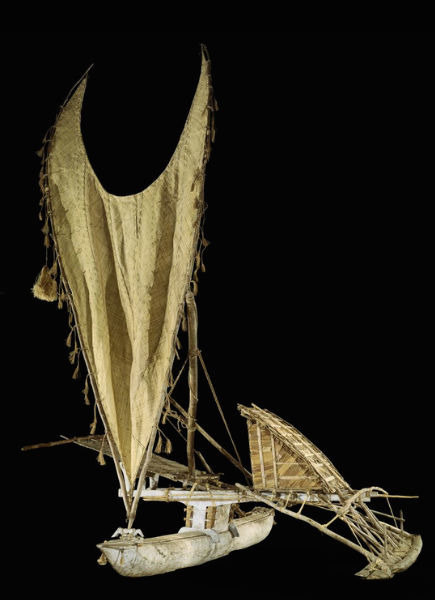

Marquesas Island Stilt Steps
Elaborately carved stilt steps, or tapuvae, fashioned from ironwood. They were attached to poles of a lighter wood to form the completed stilt, or vaeake. Stilt steps were one of the most distinctive Marquesan art forms. Like other important objects, made by specialists known as tuhuka vaeake. Stilt steps were one of the most common items collected by European and American visitors. Their use is rarely described in the early literature. This may indicate that stilt fighting was among the first traditions to fall out of practice following Western contact.
Their portability artistry made them particularly desirable to visitors, encouraging their continued production. They are likely the first Marquesan art form to be made specifically for sale.
Length of Stilt steps 35cm – 45cm
Marquesan Toggle
These small tubular pieces of human bone were carved with a single tiki figure. Called tiki ivi po’o they were used to decorate and empower important objects or as a hair adornment.
Most are only a half figure but occassional full figures are rarer and more collectable.
They were often additionally adornemt with human hair and attached to drums shell trumpets slings and calabashes.
Collectors need to be aware that there are fakes on the market and museum resin copies.
Liength 4cm – 5.5 cm


Marquesan coconut containers
These containers were carved in designs similar to those used in tattoo’s. Some were used as drinking cups while others were used for storing precious objects.
Numerous containers had no designs but these are not sort after unless they have complete cord work..
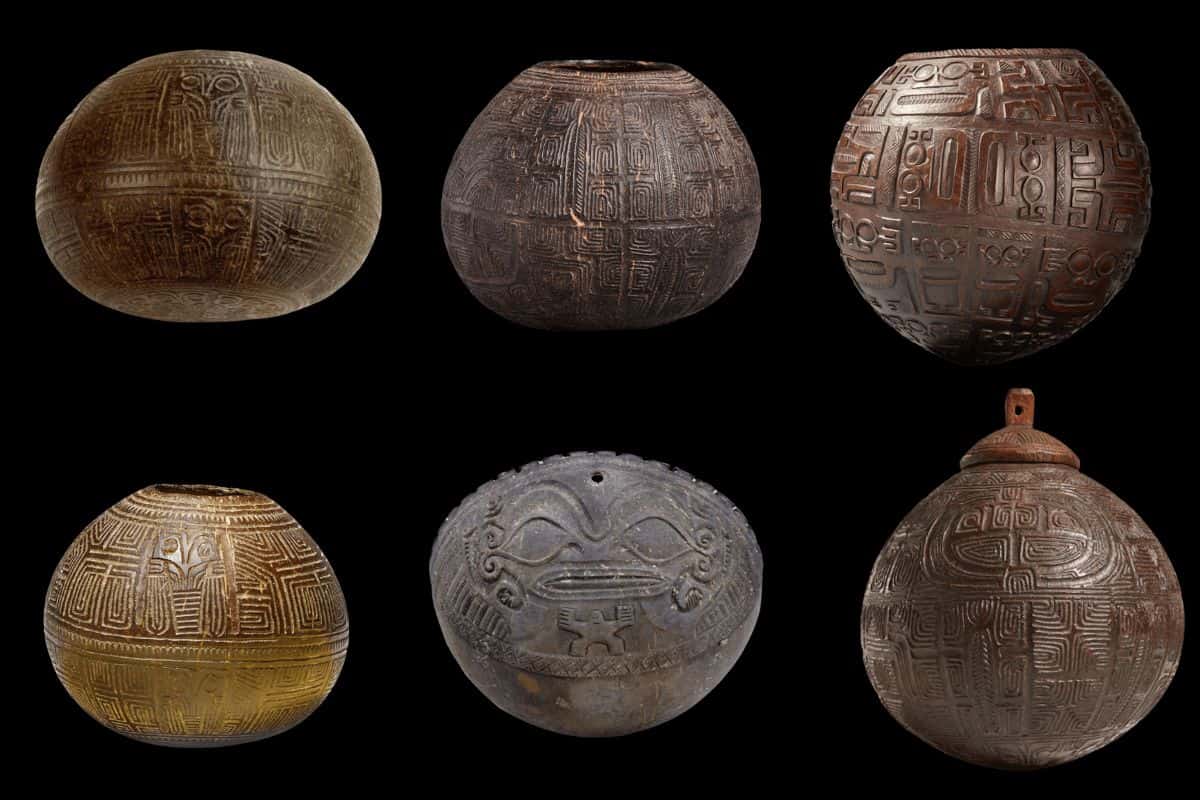
Marquesan Bowls
Marquesan bowls were used for preparing and storing popoi, a paste made from pounded breadfruit. This paste was a staple of the Marquesan diet. While some are plain the most collectable are those with the outside covered in incised tattpp like designs. They range in size from those used by a single person to large 2 m long feasting bowls.
length 35 cm – 205 cm

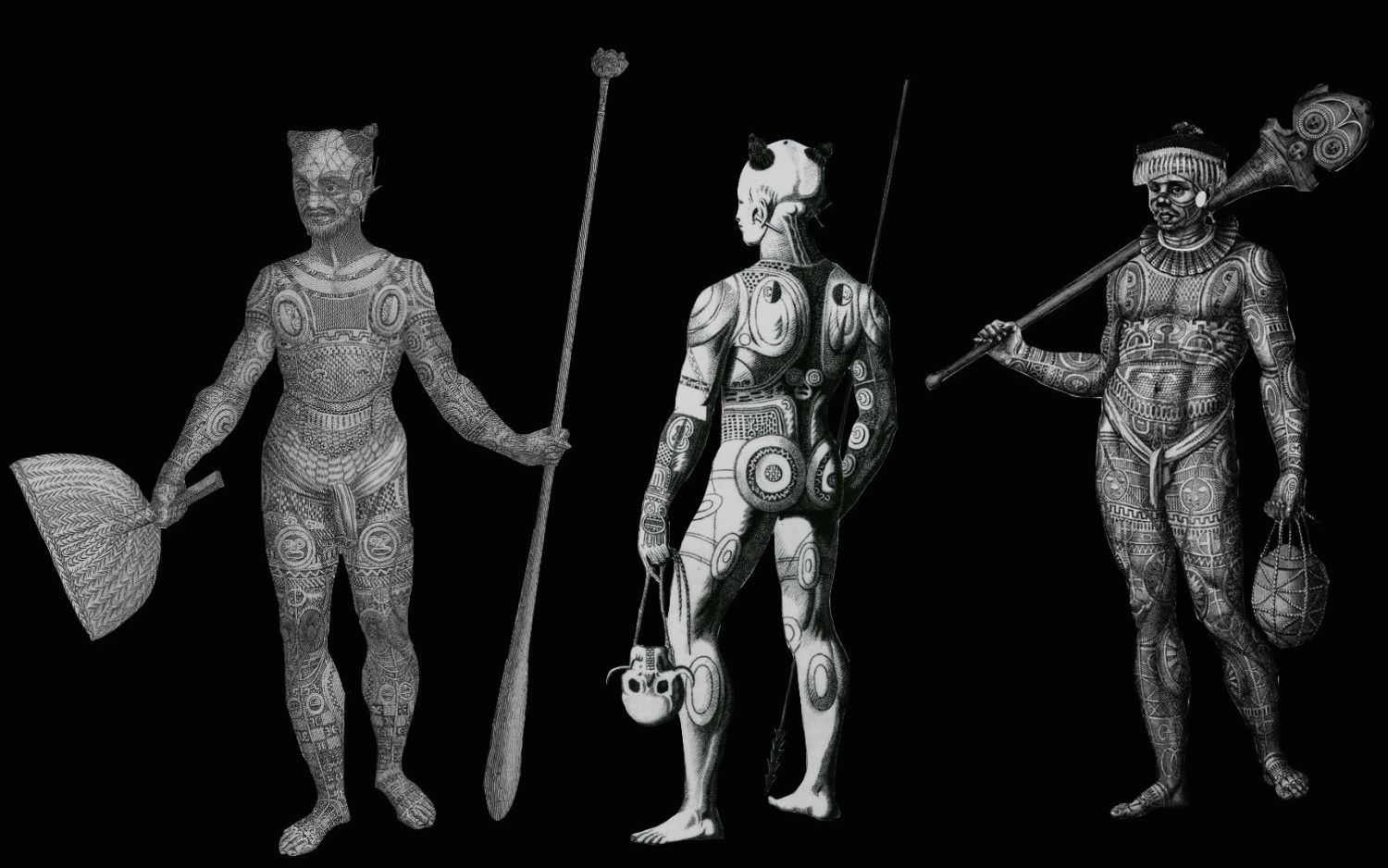

Marquesan Clubs
U’u clubs, averaging 145 cmin length, are made from hard, dense ironwood (ton). Submerged in the dark black silt-like mud of a taro patch tollowed by repreated rubbing with coconut oil, pant to impart the black color and sheen.
Incredibly difficult and time-consuming to manufacture with only neolithic tools they were not only passed down in families as treasured heirlooms, but sought after as war prizes.
Besides the Marquesan U’u clubs, janiform-headed long clubs were used in a variety of Polynesian cultures. Likely all these janiform clubs derive from a single ancestral form.
In the case of both the Easter Island and Maori weapons, it was the shafts which were the striking sections. In the Marquesan u’u clubs, on the other hand, it was the ” ear” lugs of the heavy head that formed the striking section.
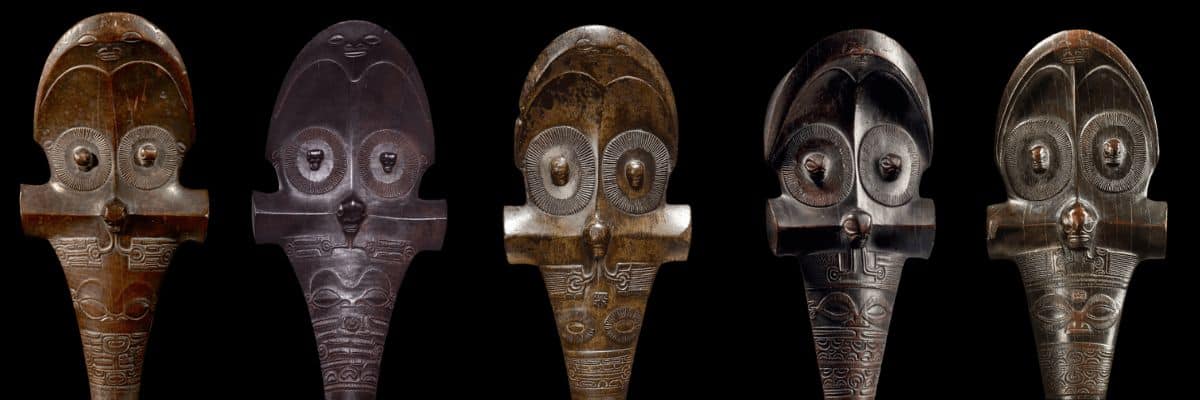
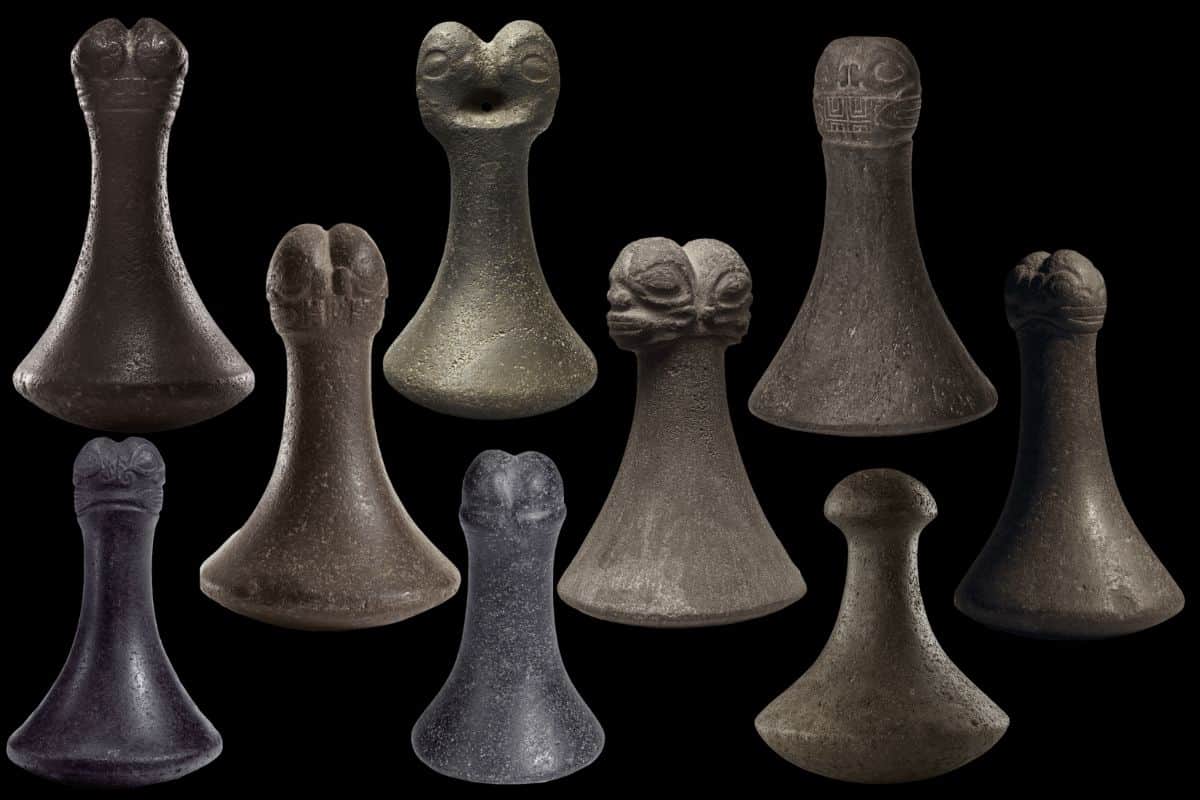
Food pounders
The marquesan janiform tiki headed basalt food pounder is the finest and most collectable food pounder in the Pacific. Considering these were made with neolithic tools they are a marvel that must have taken months to make.
These food pounders are 15cm -25 cm in height and would have belonged only to high born people and handed down through the generations.

Marquesan Drums
Drums played an important part in traditional ceremony. There are two main sizes. Those made to be used while seated and those played while standing.
Due to the religeous nature of the ceremonies these drums were not common and restricted to priestly chiefs.
Marquesan Paddles
Paddles from the maquesan islands have a very distinctive shape. The lug on the bottom was used for pushing along shallow reefs.
Later examples are carved but most of these are examples of very early tourist art. They are however still lovely objects and still collectable.

Maquesan Ear Rings
Two piece ear ornaments made from whale ivory and a cap cut from shell were restricted to high born women. They were called Taiana and carved with tiki figures.
The larger one piece ear adornments ha’akai were restricted to high born men. They are so heavy that a piece of twisted tapa cord was worn over the top of the head to support their weight..
They are highly sort after and one of the most collectable forms of Oceanic adornments.
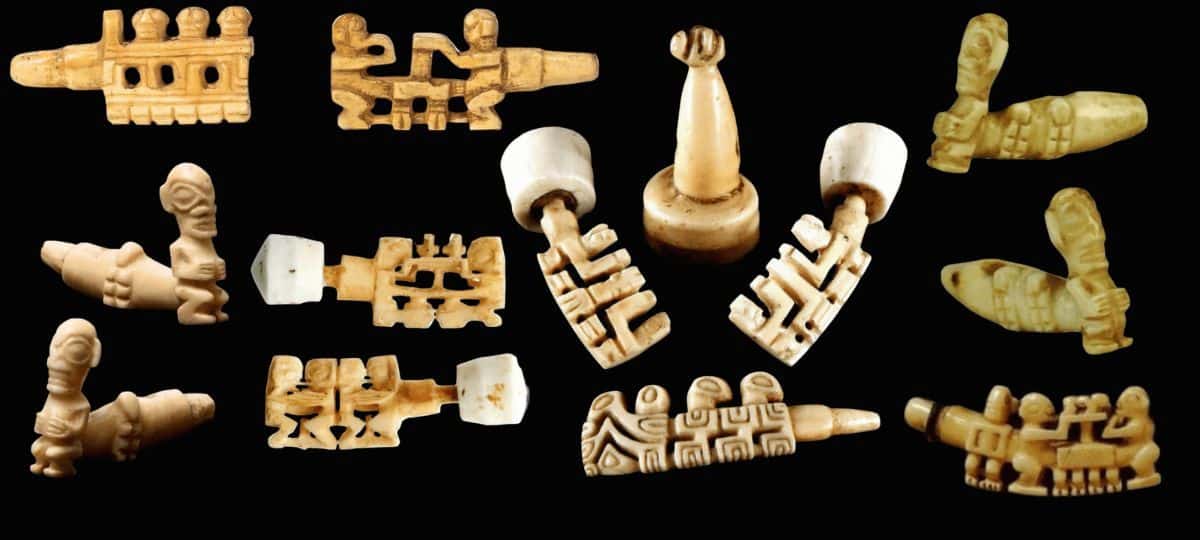


Other Adornments
1. Leg Cuffs made from glass beads
2. Armbands made from beads and bush material
3. Sash made from woven orchid fibre
4. Sash made from shell money
5. Armbands made from mastic on bush material
6. Dog tooth currency necklace
7. leg bands made from glass beads
Marquesan Head adornments
Head dresses called Paekaha were worn only by high ranking men and women. They consist of alternative segments of turtle shell and conus shell segments. The segments were held together with coir coconut fibre and decorated with disks
There were also Kapkap head adornments made of turtleshell filigree over pearl shell
Diameter 25 cm


Marquesan Adornments
Porpose teeth head bands were worn by high ranking women. Each necklace could include up to 1600 teeth and suspended from a coir necklace and decorated with glass beads.
Other rarer forms of necklace were constructed from sections of whale ivory.
Marquesan fans
Fans in central polynesia were symbols of Chifly rank and prized for their artistic merits. They were not really a a utilitarian object which is why they are part of the adornments.
Marquesan fan blades were made from split finely plaited pandanus leaves woven directly onto the shaft. They are distinctive due to their flat tops and elaborately carved handles
Average height 40 cm
Marquesan fan handles
Very few fragile fans remain intact. The fan handle however is collectable in its own right. Often adorned with janiform figures they are sort after by collectors.
